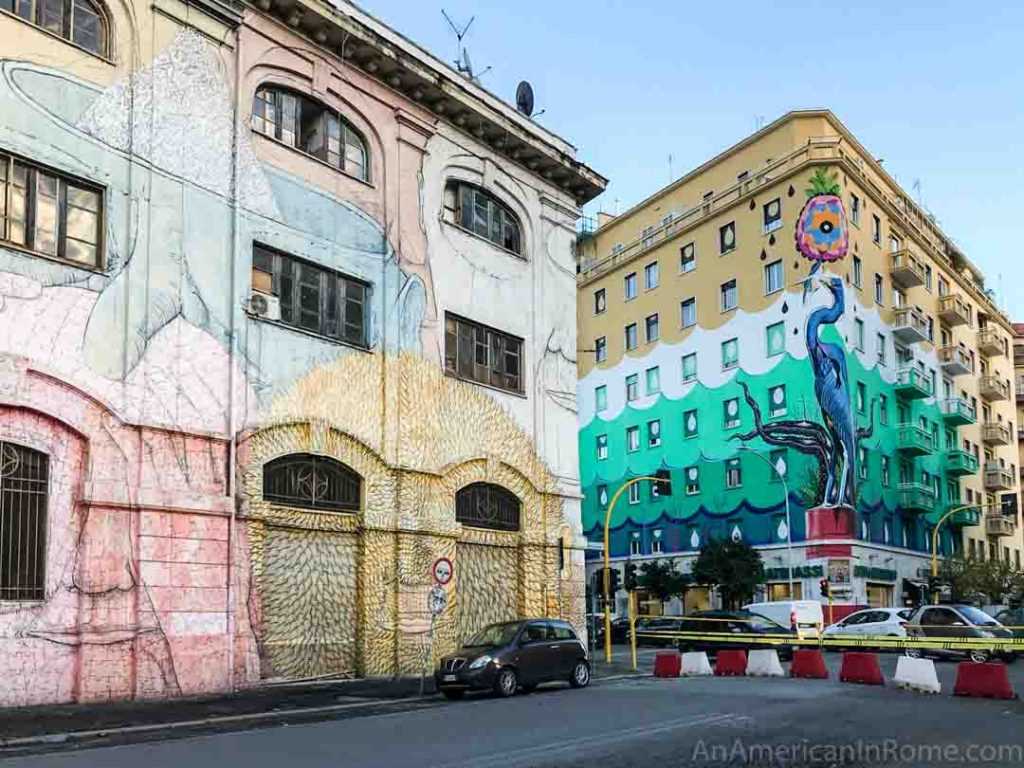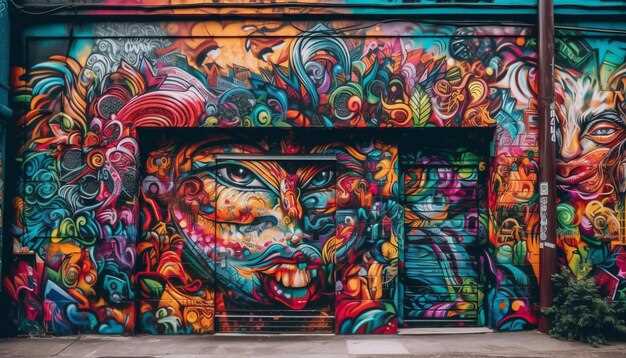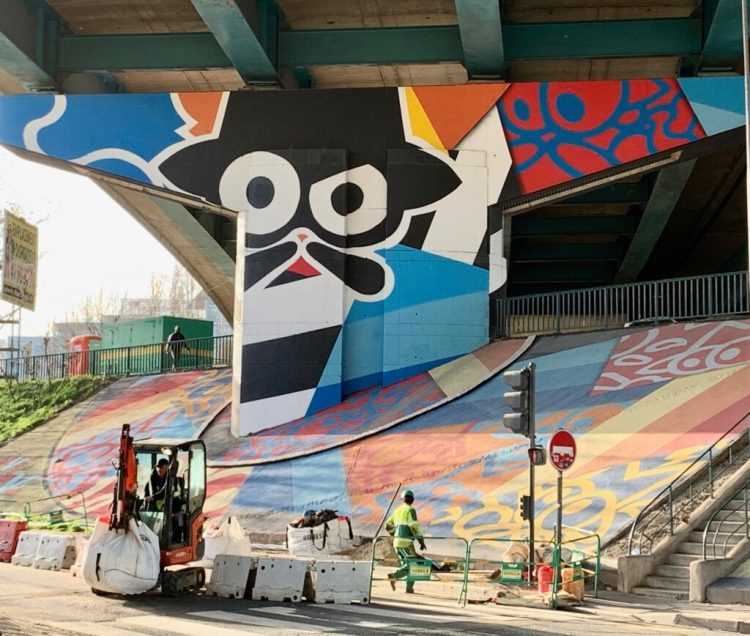
Take a stroll down the vibrant streets of Paris, and you’ll be met with a breathtaking display of artistic expression. Amidst the historic landmarks and elegant architecture, a new form of art has taken center stage: street art. The Grand Paris street art scene has emerged as a hub for creative minds and a canvas for self-expression.
Stretching across the city’s landscape, the Street Art Avenue showcases an array of captivating murals, graffiti, and urban artwork. From the striking portraits to the abstract designs, every piece tells a unique story and adds a splash of color to the city’s bustling streets. Whether it’s painted on a building facade or hidden in an unexpected alleyway, the street art scene in Paris is an ever-evolving spectacle for both locals and tourists.
What sets the Grand Paris street art scene apart is its ability to blur the lines between art and activism. Artists use their work to raise social and political awareness, shedding light on important issues in French society. Through the combination of powerful imagery and thought-provoking messages, street art has become a powerful tool for sparking conversations and challenging the status quo.
So, grab your camera and embark on a journey through the Street Art Avenue. Discover the captivating works of artists such as Invader, Pantonio, and Levalet. Immerse yourself in the vibrant world of street art, where every wall tells a story and every brushstroke is an act of rebellion. The Grand Paris street art scene awaits, ready to ignite your imagination and leave you in awe of its boundless creativity.

During the 1980s, street art in Paris gained more recognition and started to evolve into a diverse art form. Artists like Blek le Rat and Jef Aerosol emerged, using stencils to create detailed and thought-provoking artwork on the city’s walls. These artists played a significant role in the development of street art as a recognized art form in France.
In the 1990s, Paris became a hub for street art, attracting artists from all over the world. Neighborhoods like Belleville and the 13th arrondissement started to showcase vibrant murals and graffiti. This era saw the rise of artists such as Invader, who became famous for his pixelated mosaics inspired by 8-bit video games.
Today, street art continues to flourish in Paris, with the city embracing its vibrant urban art scene. Several initiatives, such as the Street Art Avenue and Le M.U.R., provide legal spaces for artists to create their work and showcase their talent. Tourists and locals alike can now explore the city’s streets to discover an incredible array of street art, from murals addressing social issues to stunning graffiti pieces that add color and life to the urban landscape.
The history of street art in Paris is an essential part of the city’s cultural identity, reflecting its ever-changing social and political landscape. It continues to evolve and push boundaries, making Paris a must-visit destination for street art enthusiasts.
Exploring Street Art in the Grand Paris
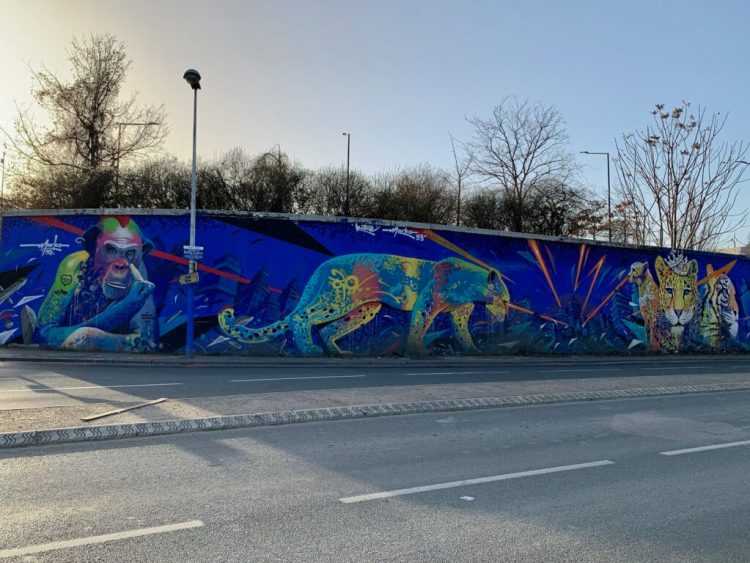
Street art has become an integral part of the vibrant and diverse cultural scene in the Grand Paris area. From the suburbs to the heart of the city, there is an abundance of street art that tells stories, challenges norms, and beautifies the urban landscape.
The Birth of Street Art in the Grand Paris

The roots of street art in the Grand Paris can be traced back to the 1980s, when the movement gained momentum in New York City and quickly spread across the globe. Inspired by the graffiti artists and muralists of the time, local artists in the Grand Paris began experimenting with new techniques and styles, transforming public spaces into open-air galleries.
One of the most influential figures in the early street art scene of the Grand Paris was Blek le Rat. Blek le Rat is often referred to as the “Father of stencil graffiti” and is known for his distinctive rat motifs that can be found throughout the city. His work inspired a new generation of street artists and set the tone for the vibrant and politically charged street art scene that exists today.
The Street Art Avenue

In recent years, the Grand Paris has embraced street art like never before. The Street Art Avenue, a project initiated by the local government, has transformed several neighborhoods into outdoor museums. This curated open-air gallery stretches for over 20 kilometers, showcasing the work of both local and international artists.
Walking along the Street Art Avenue, visitors can admire a diverse range of styles and themes. From large-scale murals to smaller, hidden gems, there is something for everyone to discover. The Street Art Avenue not only provides a platform for artists to express themselves but also acts as a catalyst for social and cultural dialogue.
Exploring the Neighborhoods
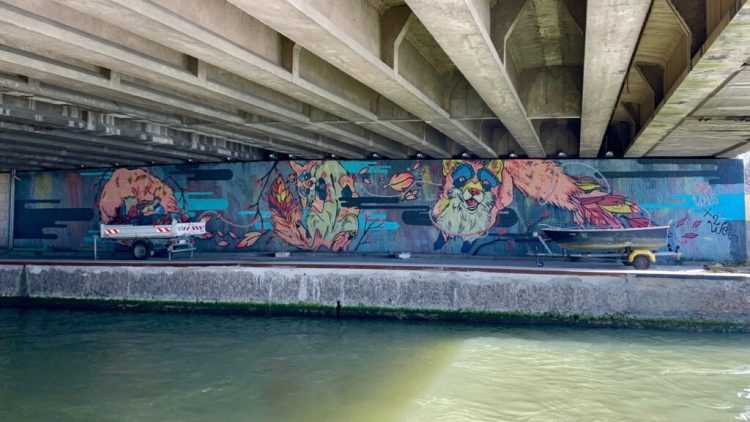
While the Street Art Avenue is a must-visit for any street art enthusiast, there are also numerous other neighborhoods in the Grand Paris worth exploring. Each neighborhood has its own unique character, and street art plays a significant role in shaping the identity of these areas.
- In Montmartre, famous for its bohemian atmosphere, visitors can find vibrant murals and stencils that pay homage to the area’s artistic heritage.
- In Belleville, a neighborhood known for its multiculturalism, street art reflects the diverse voices and experiences of the community.
- In the Marais, a trendy and historic district, street art blends seamlessly with the area’s avant-garde fashion boutiques and art galleries.
Whether you’re exploring the Street Art Avenue or venturing off the beaten path, the Grand Paris offers an immersive and exciting street art experience. From the rebellious spirit of Blek le Rat to the vibrant murals that adorn the city’s walls, street art in the Grand Paris is a testament to the power of artistic expression and its ability to transform urban spaces.
The Artists of the Grand Paris Street Art Scene
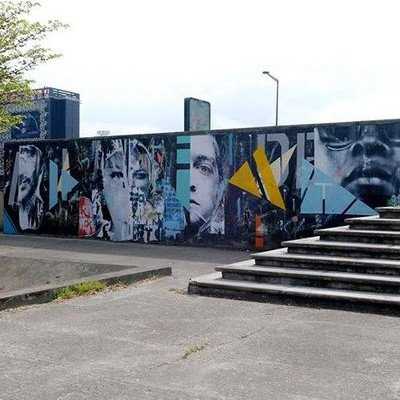
The Grand Paris street art scene is home to a diverse and talented group of artists who have made their mark on the city’s walls and buildings. From local Parisians to international artists, each brings their unique style and perspective to the vibrant art scene.
1. C215

One of the most renowned street artists in Paris is Christian Guémy, known by his pseudonym C215. He is famous for his intricate stencil work and vibrant portraits of everyday people. C215’s art can be found not only in the streets of Paris but also in galleries around the world.
2. Miss.Tic

Miss.Tic is a Parisian street artist known for her distinctive anonymous female characters and poetic aphorisms. Her art often combines stenciling and freehand drawing, creating a unique blend of femininity and urban rebellion. Miss.Tic’s work can be found on the streets of Paris, as well as in galleries and exhibitions.
Other notable artists in the Grand Paris street art scene include:
- Invader: Invader is an anonymous French street artist known for his pixelated mosaic art inspired by old video games.
- Levalet: Levalet is a French artist who combines stencils and wheat-pasting to create whimsical and thought-provoking street art.
- Blek le Rat: Blek le Rat is considered one of the godfathers of stencil graffiti and has been active in the street art scene since the early 1980s.
These artists, along with many others, have helped shape the Grand Paris street art scene into a vibrant and dynamic artistic landscape. Their work can be found on walls, buildings, and even underground, showcasing the ever-evolving nature of street art in the city.
Street Art as a Catalyst for Urban Renewal
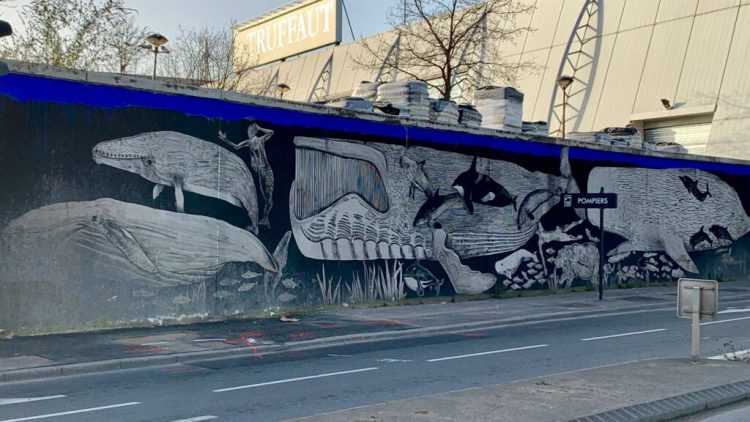
Street art has emerged as a powerful tool for urban renewal, transforming neglected city spaces into vibrant, culturally rich areas. By incorporating innovative and thought-provoking artwork into the urban landscape, street art not only enhances the aesthetic appeal of cities, but also addresses social and environmental issues.
One of the key ways in which street art contributes to urban renewal is through the revitalization of neglected urban areas. Abandoned buildings, derelict walls, and empty lots are transformed into colorful, eye-catching murals that attract both residents and tourists. This influx of foot traffic can stimulate local economies, as businesses such as cafes, galleries, and shops spring up to cater to the increased demand.
In addition, street art can foster a sense of community and pride among residents. By involving local artists in the creation of murals and installations, a neighborhood can reclaim its identity and strengthen social bonds. Public spaces become gathering places, sparking conversations and connections among diverse groups of people.
Furthermore, street art often addresses pressing social issues, shedding light on topics such as inequality, racism, and environmental degradation. By provoking thought and initiating discussions, these artworks play a crucial role in the advancement of social change. They challenge traditional power structures and give voice to marginalized communities.
Lastly, street art can have a positive impact on the environment. Artists often use overlooked or discarded materials to create their works, promoting recycling and upcycling. Moreover, murals and installations can draw attention to environmental issues, encouraging people to take action and make sustainable choices.

I am a mural enthusiast and a fervent admirer of street art. Rather than creating murals myself, I am passionate about collecting them. My love for street art knows no bounds. I am dedicated to curating and cherishing these artworks that grace the streets. My collection stands as a testament to my profound appreciation for this form of artistic expression.
read about me


